Contents
The purchase price for a Coyote engine ranges from about $4,000 to $12,000, depending on the engine generation and the completeness of the engine assembly.
1980: The Early Days of the Coyote Engine
What was to become the Coyote engine dates back to 1980. The muscle car era was running out of gas thanks to stricter vehicle emissions standards. The oil embargo of the 1970s, increased insurance rates on muscle cars, and inflated prices led to the downfall.
Undaunted, talented Ford engineers—realizing they needed a new emissions-compliant flagship power plant—began researching European and Japanese automakers’ best, most powerful, and most efficient V-8 engines.
After seven years and a $4 billion investment, Ford retooled its Romeo, Mich., engine plant to produce the first single-overhead cam modular 4.6-liter V-8 for the 1991 Lincoln Town Car. “Modular” refers to the company’s ability to retool the engine for various models.
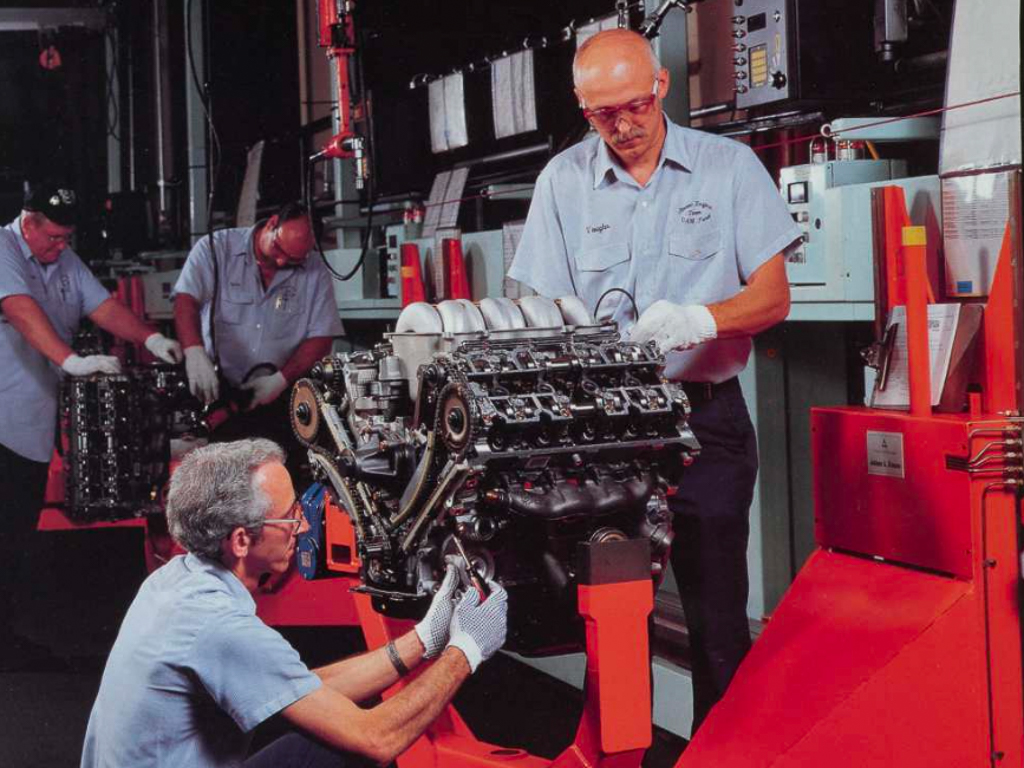
Ford technicians building 1997 SVT Mustang Cobra dual overhead camshaft engines at the Romeo plant. (Source: Ford)
1996: Mustang Gets the New Modular Engine
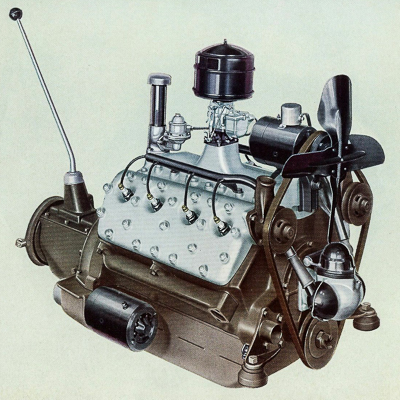
The 1932 Ford flathead brought the V-8 to the masses.
- Ford has had a V-8 in its models dating back to 1932, when it introduced the flathead V-8.
- First introduced in 1962, the 5.0-liter Windsor engine showed up in the first and nearly all Mustangs for three decades (except for 1980 and 1981 models).
- The last Mustang powered by the 5.0-liter V-8 was in 1995.
It was replaced by the new modular 4.6-liter V-8 that produced 215 horsepower. This popular engine powered about 15 different Ford, Lincoln, and Mercury models.
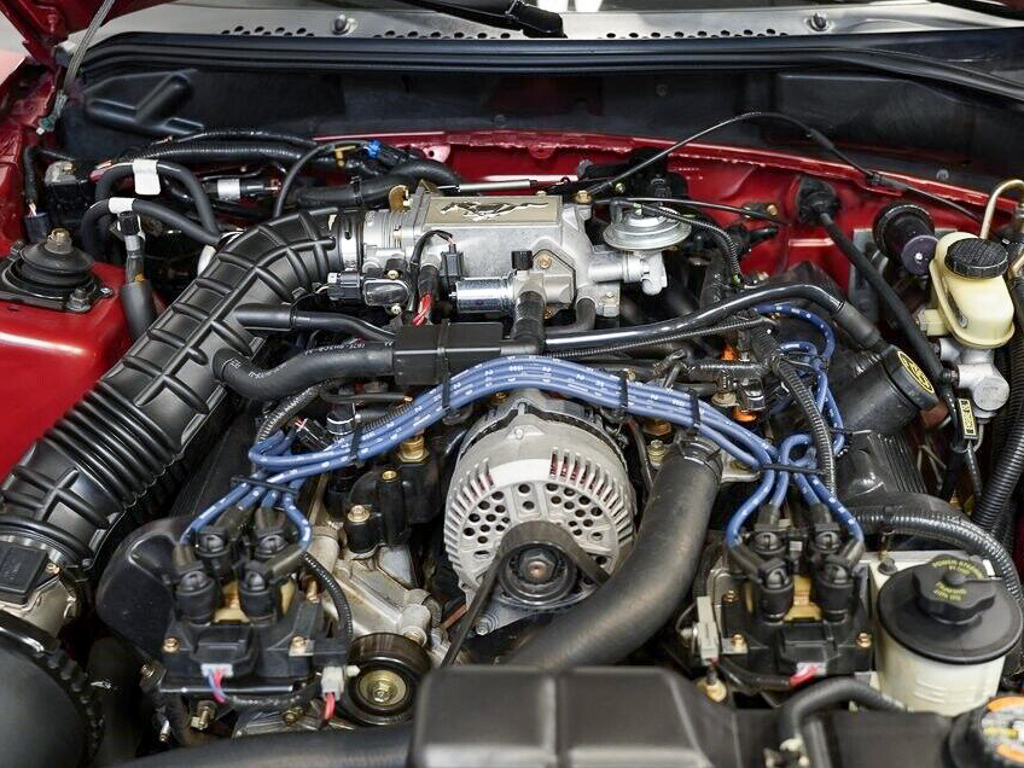
A 4.6-liter modular V-8 engine in a 1998 Mustang
2011: Generation 1 Coyote V-8 Engine Launches
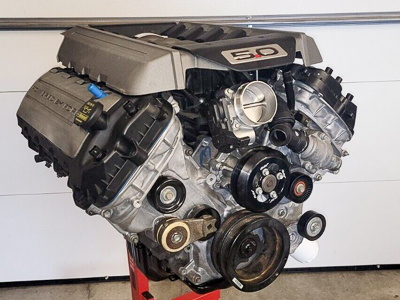
A used Generation 1 Ford Coyote engine.
For the 2010 model year, Ford introduced an all-new Mustang, but with the old 4.6-liter V-8 still providing power. By this time, Chevrolet had resurrected the Camaro, and Dodge had brought back the Challenger.
The Camaro had a 6.2-liter LS3 V-8 under the hood, and a 5.7-liter Hemi V-8 powered the Challenger. Ford’s now-anemic 4.6-liter was rapidly losing ground to these competitors.
In the years leading up to the launch of the new 2010 Mustang, Ford SVT (Special Vehicle Team)—the company’s high-performance vehicle division—was developing what later became the Coyote engine.
The Coyote name, suggested by a Ford engineer, comes from the chassis that renowned race car driver A.J. Foyt used during his Indy career racing days. Coyote was the code name that kept suppliers and competitors in the dark.
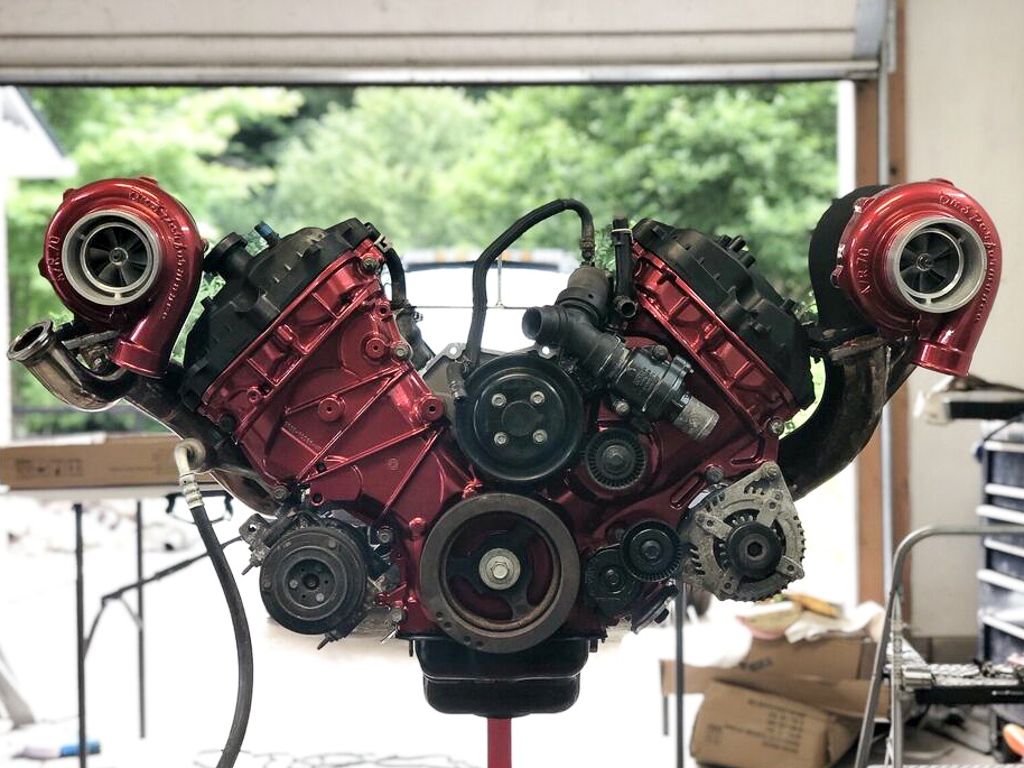
A custom built twin-turbocharged Generation 2 Coyote engine
The new engine didn’t appear in a Mustang GT until the 2011 model year, when Ford brought back the 5.0-liter V-8 in the form of the all-new Coyote engine. The engine put Mustang back in contention with the best pony cars in the world. It also brought the return of the iconic “5.0” badging. While drastically different from the outgoing 4.6-liter, it did share some of the features of the Ford modular family.
The Coyote was an all-new design that used an all-aluminum engine block and cylinder heads. It also used a plastic composite intake manifold not unlike what was used on the 4.6-liter, helping to reduce overall weight.
However, the most significant difference was the dual overhead camshafts with twin independent variable cam timing—Ti-VCT in Ford speak—with its ability to control the opening time of the intake and exhaust valves. The result was a triple victory of reduced engine emissions, improved fuel economy, and a massive 412 horsepower and 390 pound-feet of torque.
2012: Coyote Adds Road Runner
For the 2012 model year, Ford launched the Boss 302 edition Mustang—slotted just above the GT. It ran an upgraded Coyote engine named Road Runner that upped the horsepower from 412 to 444 with 380 pound-feet of torque thanks to new heads, improved intake valves, and a lighter valvetrain. Again, all this is via natural aspiration and not forced air induction.

The Coyote engine in a 2012 Ford Mustang Boss 302
The Boss 302 carried over for the 2013 model year, but Ford dropped it for 2014. The GT was the only remaining Coyote-powered Mustang, and it saw horsepower increase to 420 for the 2013 and 2014 model years.
Shop now for Ford Mustang Coyote engines2015: Generation 2 Coyote
Unlike the all-new 2010 Mustang that had launched without a Coyote engine, the sixth-generation Mustang came with the updated and reworked Generation 2 Coyote engine.
The GT was the only Coyote-based Mustang for the 2015 to 2017 Mustang model years. It enjoyed a horsepower boost from 420 to 435, and torque was upped to 400 pound-feet.
From the outside, Generation 1 and Generation 2 Coyote engines look nearly identical. It’s nearly impossible to tell them apart. The significant changes for the Generation 2 engine come internally, with larger intake and exhaust valves, a larger camshaft, and revised cylinder heads that allow it to flow significantly more than the Generation 1 Coyote. Ford also added motion control valves intended to add idle stability.
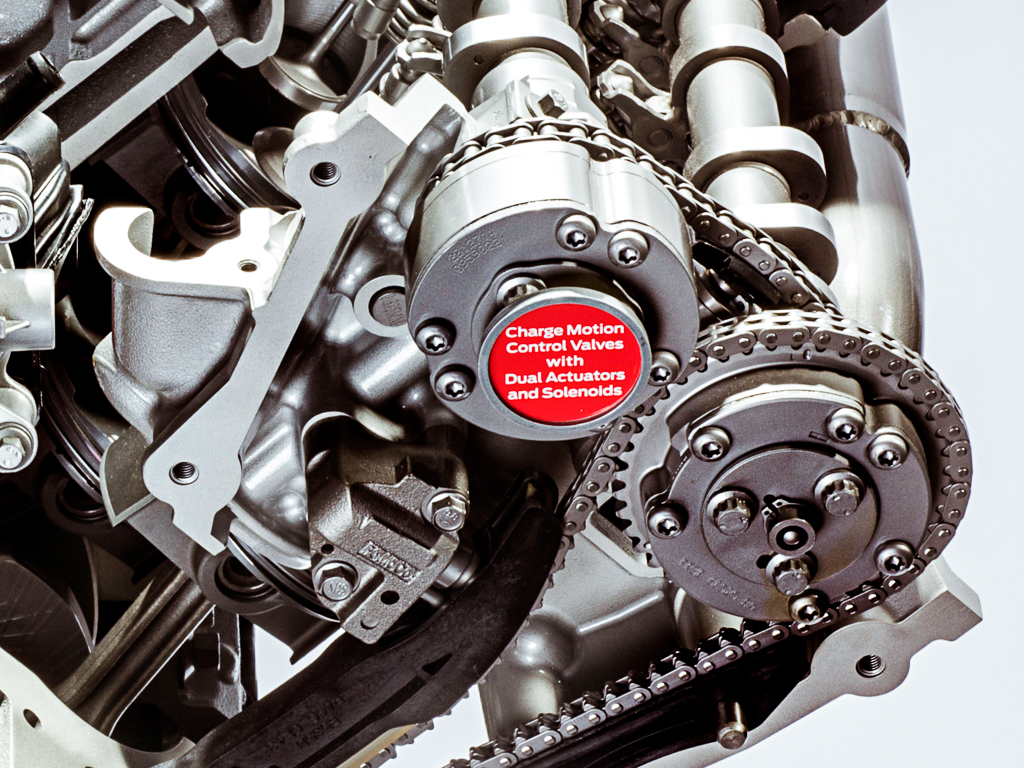
Dual overhead camshafts with variable valve timing got an upgrade for Generation 2 (Source: Ford)
Ford introduced a lot of engine upgrades between the Generation 1 and Generation 2 Coyote, making it a better engine in many ways. Most changes focused on increasing airflow and improving high-rpm operation. Most impressive is that peak rpm and peak torque were now within the same rpm range.
2018: Generation 3 Coyote
In 2018, Ford released the Generation 3 Coyote. This launch saw the most significant changes to the Coyote platform yet, the biggest the addition was direct injection.
Ford used both port and direct fuel injection, resulting in an increased compression ratio—from 11:1 to 12:1—a significant performance boost for naturally aspirated engines like the Coyote. Other modifications included a minor bore displacement modification, plasma-wired arc cylinders, more robust casting materials, and larger valve ports and cylinder heads.
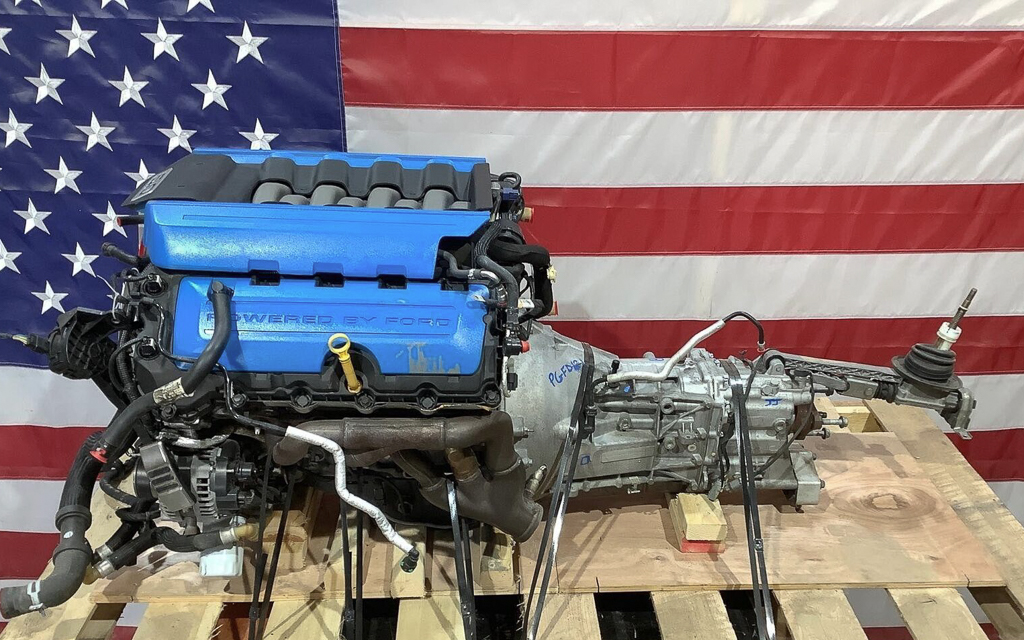
A ready to swap Gen2 Ford Coyote engine and 6-speed manual transmission.
All these changes from Generation 2 to Generation 3 increased horsepower from 435 to 460 and torque from 400 pound-feet to 420 pound-feet.
Shop now for Ford Mustangs2024 Generation 4 Coyote
The all-new seventh-generation Ford Mustang GT will benefit from the new Generation 4 Coyote engine. While we do not yet have all the details, Ford confirmed these features:
- Dual throttle bodies
- A revised 4-into-1 exhaust manifold
- New and improved engine cooling system
- A steel engine cover and steel oil pan
- Revised wiring, fuel, and brake line routing for a neater appearance.
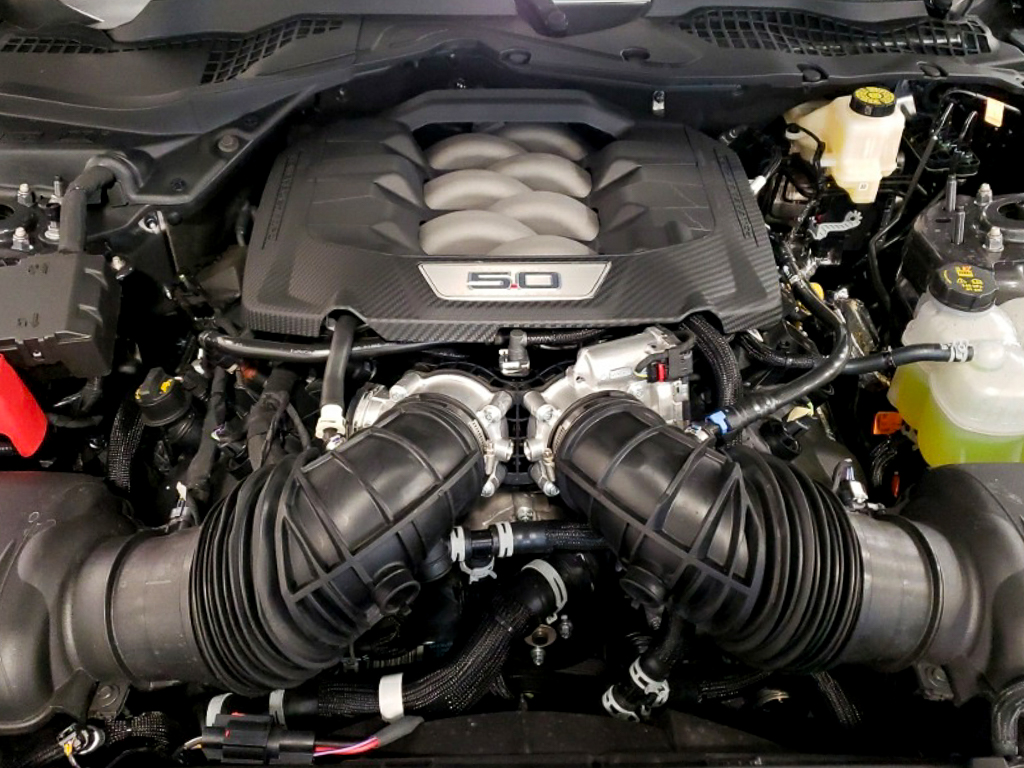
The Generation 4 Coyote V-8 in a 2024 Ford Mustang GT
Horsepower for the Generation 4 Coyote is upped to 480 with 415 pound-feet of torque. According to Ford, an optional performance exhaust increases output to 486 horsepower and 481 pound-feet of torque.





